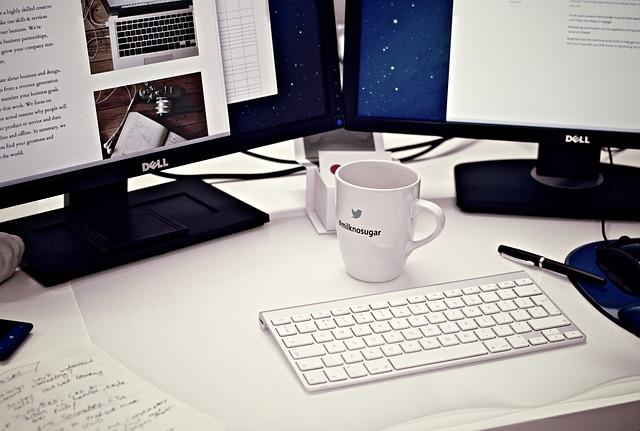Posts by Hayes
Snacks that Keep your Batteries Charged
Staying energized with snacks?
While we sleep, our body rests and fasts and this is why blood sugar levels often reach a low by 7 AM. Many of us wake up at this time and get going to be at work by 9. Say you are part of the minority who enjoys a balanced breakfast in the morning: by the time you’ve reached work and settled in for the day, you’ve already exerted yourself quite a bit, both physically and mentally. Blood sugar levels are often dipping around 10 AM and by the time lunch rolls around you are positively hangry- a feeling that results from low blood sugar.
Because low blood sugar makes us feel light-headed, anxious and hungry, we often reach for the easiest, quickest meal in an act of desperation. This is quite often a carb-overload that spikes our blood sugar and leaves us, again, fatigued even though we just ate. There must be some way around this madness! Snacking is a good solution for people who need to stay energized throughout the day.
Snacking done right
Snacking doesn’t deserve the bad rap it has in many wellness cicles. A properly timed snack will:
- Balance blood sugar levels
- Fend off hunger
- Prevent the release of stress chemicals
But what is snacking done right? We’ve come up with a checklist that can help you build a snacking plan:
- 150-200 calories
- A mix of carbs, protein, healthy fats
- No refined sugar or saturated fats
- Nutrient-density is important
With this criteria, the candy bar doesn’t look so substantial after all. But that doesn’t mean you can’t have chocolate! Here are some healthy snack ideas:
- Find your favorite trail mix and keep a bag at your office.
- Nut butter with an apple or banana.
- Yogurt parfait
- Quinoa based snacks
- Hard boiled egg with hummus
Even a perfectly timed peanut butter and jelly sandwich can save the day! Snacking is one of the best ways to stay energized throughout the day and keep stress at bay. Keeping energy up and stress down are two principles that align with the work we do as chiropractors- if you are suffering from chronic low energy levels, give our office a call to schedule an appointment today.
Dr. Chris Hayes, D.C.
Baby Stepping your Way to Fitness
“Fitness” is not going to happen overnight.
And what does fitness mean anyway? A ripped set of muscles or a killer beach body?
No, we think true fitness is a body with less pain and less weight to hold you back from doing things you truly love; a body that will prevent an old age full of difficulty and dysfunction. Any good fitness plan begins with realistic expectations so write down exactly what your fitness means to you and this will become your guiding light through the process ahead.
Start simple with a single habitual exercise.
This is our challenge to you:
- 10 push-ups a day done non-sequentially (eventually you’ll want to do them in a row) OR
- 10 sit-ups a day OR
- 20 minutes of recreational walking
…you get the idea. Challenge yourself! If you can do something once every single day, especially something that you like, your body and brain will begin to crave the endorphin release and you will start seeking out this activity as opposed to forcing yourself. From here, you build incrementally and we can help you put a plan in place to do just that. But it begins with changing the attitude toward movement.
Stop looking at fitness as intimidating
But do keep your expectations realistic- this may be one of the hardest things you do but the upside is tremendous! At Hayes Family Chiropractic, we know that getting fit is a tough business, but we’ve seen great success that starts with realistic expectations. That’s why we offer you our fullest support in keeping your body free of pain so that you can pursue and realize your greatest fitness dreams. Give our office in Dunedin a call to schedule an appointment today.
Dr. Chris Hayes, D.C.
The Technique of a Successful Sitter
Sitting is not the unconscious activity we give it credit for
It is much more insidious, contributing to obesity and risk for cardiovascular disease while simultaneously destabilizing the back, leading to pain and degeneration in your spine. And then you end up at the chiropractor’s office wondering where it all went wrong. Well, if you must sit all day, we must be proactive about it:
Ensure that your desk is not working against you
Here is an easy to follow ergonomics checklist.
- Top of your monitor at eye level. This encourages your head to stay straight; think about how you look down when the monitor is below eye level- this encourages your head to lean forward and down, and magnifies the weight of the head to the spine.
- Butt touching the back of the chair. This goes a long way toward keeping your back straight and upright. Use a pillow or rolled up sweater to provide support for the lower back.
- Hips at 90 degrees or slightly higher, with feet flat on the floor (or a footrest)
- Keyboard in line with elbow joint to prevent pains in the arms.
At Hayes Family Chiropractic, we believe in stacking the odds in your favor. By checking yourself against this list, you are making it a lot easier for your body to remain in a posture that is at least not actively damaging your spine. From here, it is about being attentive and proactive to moving as much as possible, whether it be at your desk or getting up and walking around.
At our office in Dunedin, we can show you the importance of posture and help think up creative solutions for your workplace. Posture is one of the best ways you can be preventative with your healthcare; let us help you redefine your attitude and reset your workplace by calling our office and scheduling an appointment today.
By checking yourself against this list, you are making it a lot easier for your body to remain in a posture that is at least not actively damaging your spine.
Deskercise: Sneaky Ways to Stay in Shape
Rethinking the way we exercise
Between working, commuting and relaxing, many of us are spending up to 70% of our waking hours seated! This is rough news for our bodies, particularly our backs and even people who make a pilgrimage to the gym after work still need to be wary of sitting for long periods of time without a break. If we are going to be spending so much time at the desk, we may as well use a few minutes to keep our bodies in a state of fitness. As chiropractors, we will focus on deskercises that target muscle groups of the core, the upper legs and hips, shoulders and necks.
Subtle deskercises for the discerning worker:
- Glute squeeze: Squeeze your glutes together and hold 5-10 seconds then release. Repeat as often as you want or until the glutes are tired.
- Sub-desk leg raising: while seated, straighten legs in the air and hold for 5-10 seconds. Let them down slowly and repeat up to 20 times or until you tire.
- Ab squeeze: tighten the abdominal muscles, hold for 5-10 seconds and release. Repeat 15 times.
- Using the swivel chair: Lift and hold your feet slightly off the ground. Grip the edge of your desk with thumb and forefinger and gently swivel from side to side to train the oblique muscles in your core.
- Shoulder shrug: Lift shoulders up toward ears, hold 5 seconds and let down slowly. Repeat. This one is great for releasing tension in the upper back and neck.
- Neck strengthening: Put your head in your hands and push. Engaging the muscles of the neck, resist. Then put hands on back of head and push, also resisting with the neck muscles. Hold each for 5 seconds and repeat up to 5 times.
None of these require you to get out of your chair, let alone make a buzz around the office by looking goofy. The emphasis should always be on movement; the more we can keep our muscles moving throughout the workday, the less tension will build. At Hayes Family Chiropractic, we help the deskbound worker by working with you to establish good posture as second nature- this is the single most important thing you can do if you must sit all day. Furthermore we treat sore muscles and nerve dysfunction in the spine with chiropractic adjustment.
Dr. Chris Hayes, D.C.
Brain Food: Keeping the Noggin Well-Nourished
Today, a subject that is certain to get the juices flowing: cerebral circulation.
What price can you place on your brain? It is the central processing unit for your entire world, and it is hungry! For an organ that makes up only about 2% of body mass, the brain uses more energy than any other organ- up to 20% of the body’s total, and three times as much oxygen as other muscles in the body. So we need to ensure that our brain is well-fed. But how?
It begins with blood
The blood vessels that supply the brain bring freshly oxygenated blood and other important nutrients, including glucose to the brain to help the cells respire and keep you energized and clear. This is what we call cerebral circulation: the flow of nutrients to the brain cells and then the flow of de-oxygenated blood, carbon dioxide, lactic acid and other metabolic products back to the heart.
Stagnation is the enemy of circulation
Breathing well is very important, as discussed in my last blog post here. But so are two other factors which seem to crop up time and again: diet and exercise. If you find yourself sitting for long periods of time, stand up and have a quick walk and a stretch to break the monotony of stagnation. When it comes to diet, the most important vitamins for the brain are of the b-complex and vitamin C, along with magnesium, zinc and calcium. Adding these into your diet, whether through supplement or in meals, is a great way to ensure your brain is receiving the nutrients it needs!
Above all, remain interested and active; make your brain work toward things that make you happy. The reward complex of the human brain is a powerful tool when used the right way! Chiropractic is another powerful tool for ensuring that circulation flows evenly through the body and brain. Give our office in Dunedin a call to schedule an appointment today.
Dr. Chris Hayes, D.C.
Deep Breathing to Beat Stress
In the heat of a stressful moment, deep breathing is a powerful tool.
There is so much wisdom in the saying, “take a deep breath.” But to go a step further we should try taking a full minute of deep breathing. In moments of panic, when stress is boiling over, our breathing tends to become shallow and insignificant. A signal characteristic of shallow breathing is expansion of the chest cavity. As I wrote about in our blog here, the elements of deep, diaphragmatic breathing are as follows: contracting the diaphragm, in-taking air through the nose and filling the lungs to the bottom, where blood is circulating. A signal characteristic of deep breathing is expansion of the abdomen and not the chest.
The benefits of deep breathing:
-
Cells of the brain and body receive a steady supply of oxygenated blood
-
The body is able to detoxify and release toxins easier
-
Blood circulates better
-
Blood pressure lowers
These are important factors in the fight against stress. Those benefits contribute to a sharper mind, less tension in the body and an elevated state of mind.
Another side effect of stress is tension in the muscles
Sitting for hours, typing and clicking and all the time tension is rising; you can feel it in your shoulders and lower back in particular. Here is a quick method for dispelling this tension: known as progressive muscle relaxation, it combines deep breathing with activation of the muscles to relieve tension.
- Start deep breathing, in for four seconds and out four rhythmically
- With each inhale, flex a different muscle group, starting with the toes and working up to the shoulders
- With each exhale, let go and then move to the next group.
This should see a marked improvement in stress relief both physically and mentally. At Hayes Family Chiropractic, we can help you manage the stress of your daily life. Deep breathing is a great way to start, but it is only the tip of the iceberg! Call our office in Dunedin to find out how we can optimize your body and brain in the fight against stress.
Dr. Chris Hayes, D.C.





